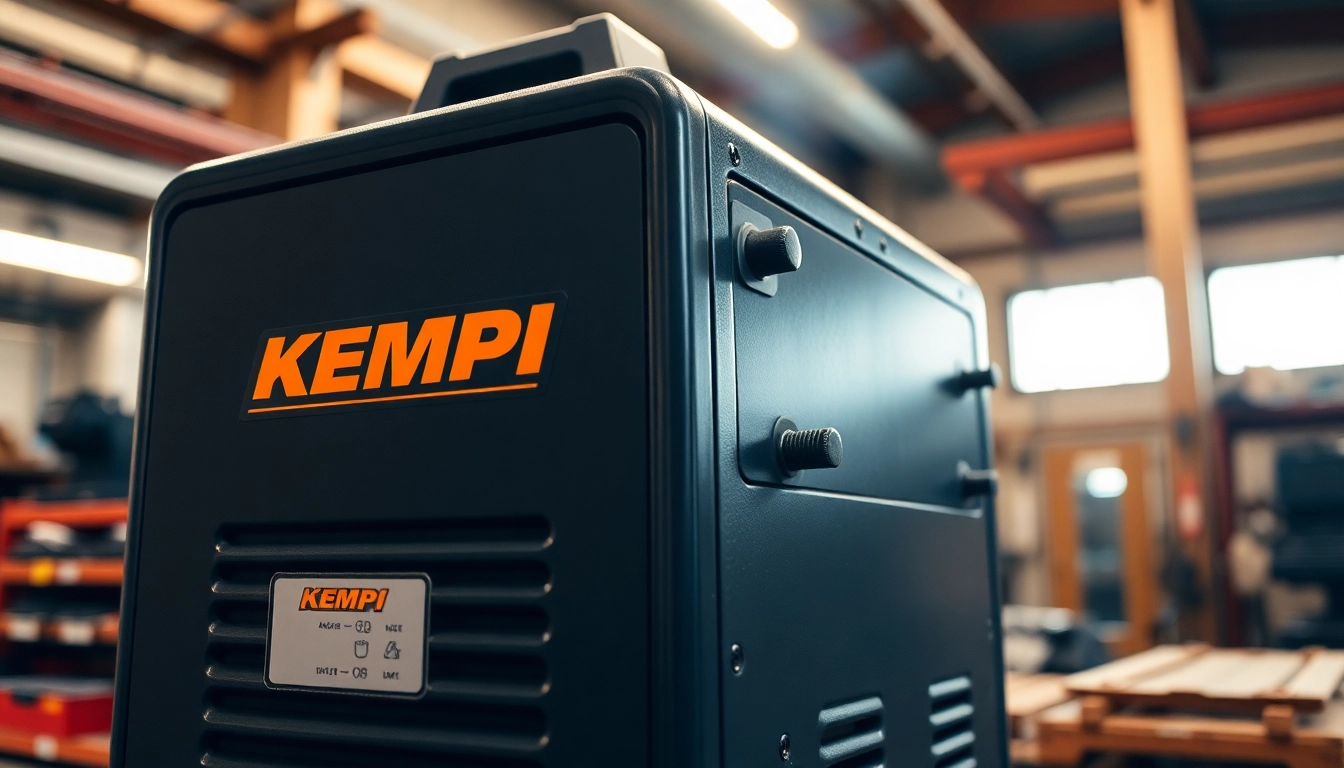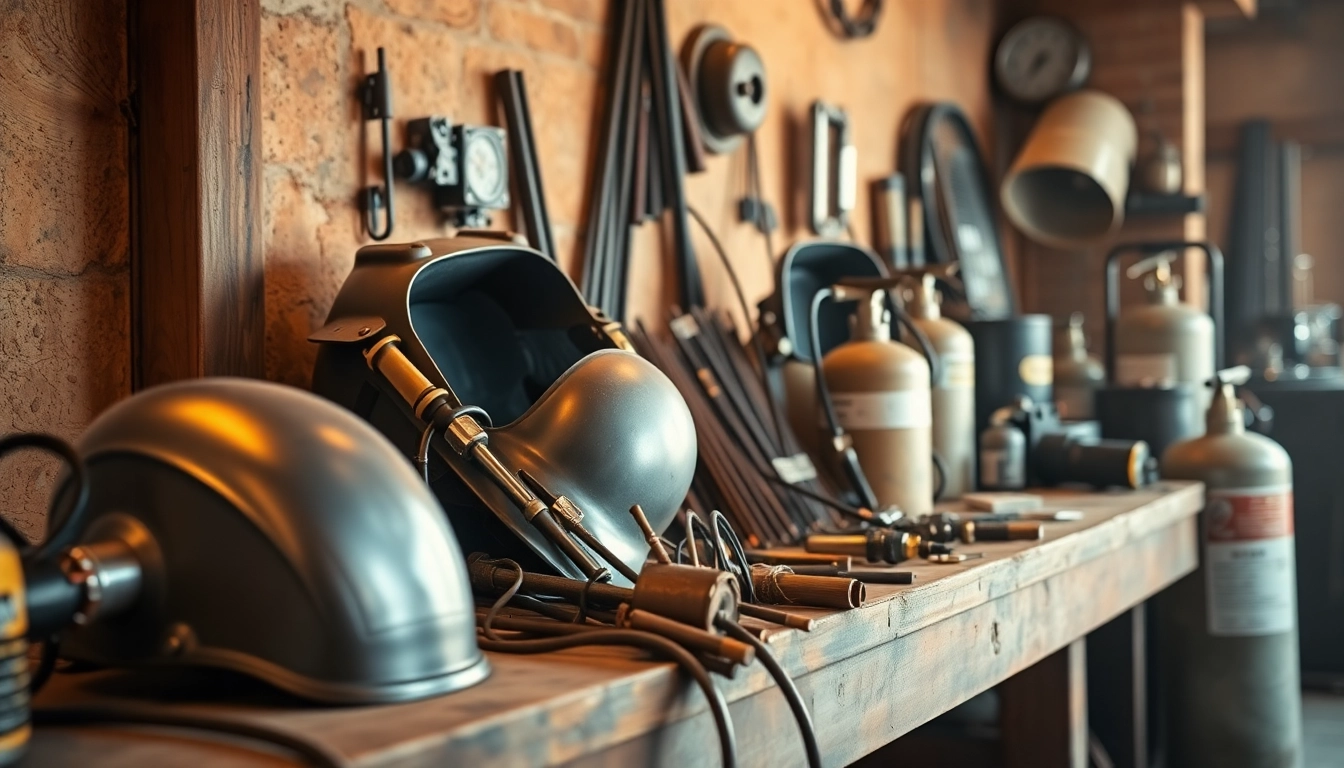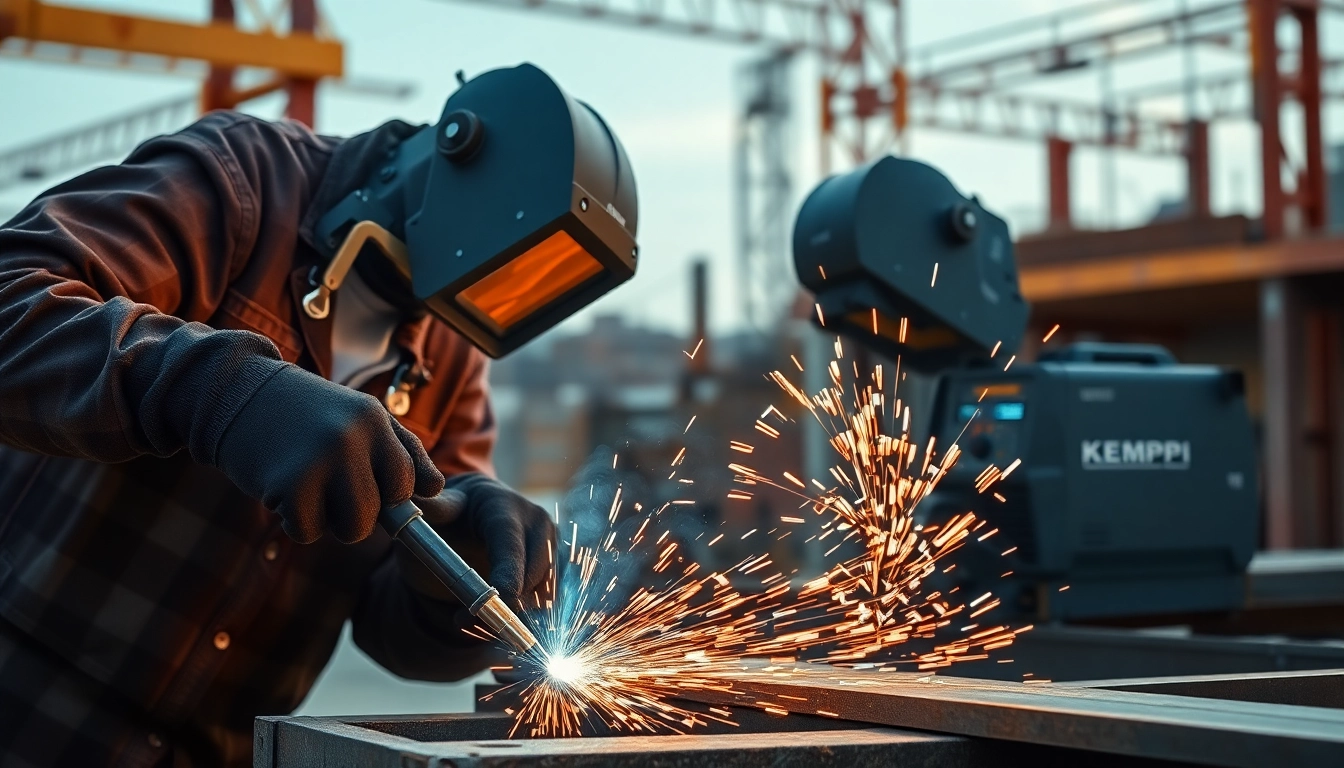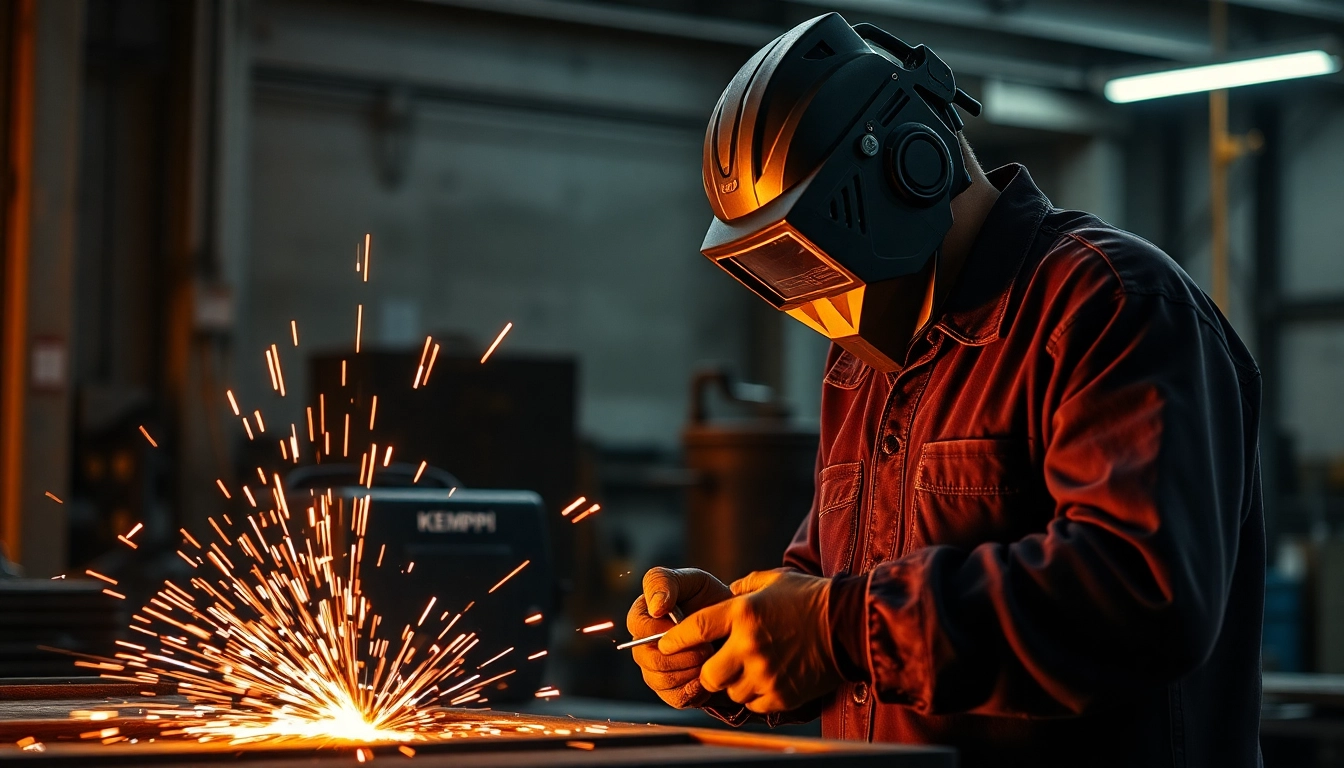Understanding Kemppi Welders: A Comprehensive Overview
Introduction to Kemppi Technology
Kemppi welders are synonymous with innovation and quality in the welding industry. Established in Finland, Kemppi Group Oy has a rich history of over 70 years, specializing in arc welding equipment and software solutions. Over the decades, they have built a reputation for delivering high-performance welding machines designed to meet diverse industry needs. Whether for professional or amateur applications, kemppi welders offer a blend of user-friendly features and advanced technology that elevate welding processes to new heights.
Key Features and Benefits of Kemppi Welders
One of the standout features of Kemppi welders is their commitment to delivering superior welding quality. Incorporating cutting-edge technology, such as inverter technology and intelligent welding software, Kemppi machines provide precise control over the welding process. Some of the key benefits include:
- Enhanced Efficiency: Kemppi welders are designed to optimize welding speed and reduce rework, resulting in significant time savings.
- User-Friendly Controls: Many models feature intuitive interfaces that simplify adjustment settings, making them accessible even for beginners.
- Diverse Applications: The versatility of Kemppi’s product line means they can be tailored for various welding methods, including MIG, TIG, and more specialized applications.
- Energy Efficiency: With lightweight designs and energy-saving technology, Kemppi welders minimize power consumption without compromising performance.
Comparison with Other Leading Brands
When comparing Kemppi welders to other leading brands in the market, such as Lincoln Electric and Miller Welding, several differentiators emerge. While Lincoln Electric is often recognized for its robust industrial machines, Kemppi excels in incorporating smart technology that enhances user experience and efficiency. Additionally, Kemppi’s focus on both small and large-scale welding applications provides a unique edge, appealing to both hobbyists and commercial users.
Moreover, customer service and accessibility play crucial roles in brand loyalty. Kemppi has consistently received high marks for its post-purchase support, whether through training resources, warranty services, or its comprehensive global network of distributors.
Types of Kemppi Welders Available
MIG and MAG Welding Solutions
Kemppi’s MIG (Metal Inert Gas) and MAG (Metal Active Gas) welding machines are designed for maximum versatility and efficiency. These solutions are perfect for projects ranging from thin metals to heavy-duty applications. Machines like the Kemppi Master M series are celebrated for their compact size and high functionality, making them ideal for both workshops and onsite operations. Key specifications often include:
- Adjustable welding parameters for various metal thicknesses
- Integrated wire feeding systems for consistent output
- Lightweight designs that enhance portability
This flexibility allows operators to tackle a wide range of jobs, from automotive repairs to fabrication tasks, all while ensuring a seamless user experience.
TIG Welding with Kemppi Equipment
TIG (Tungsten Inert Gas) welding is another area where Kemppi excels. Known for its precision and control, TIG welding is often used for intricate projects that demand high-quality results. Kemppi’s TIG welders, such as the MinarcTIG series, incorporate features such as:
- High-frequency ignition for improved arc stability
- Advanced cooling systems for prolonged usage
- User-adjustable settings for different materials
These welders are ideal for professionals who require a high degree of accuracy and control, particularly in the automotive, aerospace, and fabrication industries.
Specialty Welding Applications
Kemppi also caters to specialized welding needs with equipment designed for particular tasks, such as aluminum welding or pipe welding. These machines often include unique features tailored to specific materials or industrial requirements. For example, the excellent duty cycle and portability of the Kemppi X8 range makes it suitable for construction sites, while advanced pulse MIG technology enhances aluminum welding capabilities.
Such specialization enables users to achieve often unattainable quality in challenging environments, ensuring reliability and consistency in every arc strike.
How to Choose the Right Kemppi Welder for Your Needs
Evaluate Your Welding Requirements
Before investing in a Kemppi welder, it’s essential to assess your specific welding needs. This includes considering the types of projects you’ll undertake—whether for metal fabrication, automotive repairs, or construction. Each of these applications may require different welding processes (MIG, TIG, etc.) and functionalities.
Additionally, think about the thickness of the materials you will mainly be working with and the expected project workload. This assessment leads to choosing a machine with the appropriate power output, duty cycle, and versatility.
Understanding Consumables and Accessories
Welding is not limited to machines alone; understanding the consumables involved is crucial. Kemppi offers a variety of welding wires, electrodes, and shielding gases that complement their welders. Selecting the right consumables will significantly affect the quality and efficiency of your welds. For example, choosing the right diameter of welding wire for the thickness of the material is fundamental to achieving good penetration and bead formation.
Moreover, consider investing in necessary accessories, such as welding helmets, gloves, and protective clothing, to ensure safety while enhancing your welding process.
Price Ranges and Budget Considerations
The pricing of Kemppi welders varies widely, influenced by features, specifications, and intended use. Entry-level models often start at a more affordable range, suitable for beginners or light-duty applications, whereas high-end models can reach premium prices due to advanced technologies and capabilities.
When creating a budget, factor in both the initial price of the welder and the cost of ongoing consumables and accessories. It’s crucial to find a balance between your project’s needs and financial constraints, ensuring you receive the best value for your investment.
Expert Tips for Operating Kemppi Welders Effectively
Safety Measures and Best Practices
Safety while welding cannot be understated. Proper use of personal protective equipment (PPE), including helmets, gloves, and protective clothing, is essential to guard against sparks and UV radiation. Moreover, ensure your welding area is well-ventilated to minimize exposure to harmful fumes.
Familiarizing yourself with the machine’s operation manual and practicing on scrap material before starting a project can help in mastering the controls and settings, reducing the risk of error and accidents.
Maintenance Tips for Longevity
To ensure your Kemppi welder operates optimally throughout its lifespan, regular maintenance is vital. This can include:
- Cleaning the machine regularly to remove dust and debris
- Inspecting cables and connections for wear and tear
- Regularly changing out consumable parts as dictated by usage
By adhering to these practices, users can prevent common issues that lead to downtime, maintaining productivity and performance.
Common Troubleshooting Techniques
Even experienced welders encounter challenges. Some common issues include poor arc stability, irregular wire feeding, and insufficient penetration. Simple troubleshooting steps may include:
- Adjusting voltage and wire speed settings as per the material type
- Checking for obstructions in the wire feeder
- Ensuring that the ground clamp is securely attached and free of rust
Being adept at such troubleshooting techniques allows welders to minimize downtime and maintain the quality of their work.
Customer Reviews and Testimonials of Kemppi Welders
Case Studies from Professional Welders
Several professional welders have shared experiences highlighting the reliability and quality of Kemppi machines. For example, a manufacturing facility utilizing Kemppi MIG welders reported a significant increase in productivity and weld quality during their busy production phase. Operators noted the machines’ user-friendly nature, allowing less experienced team members to produce high-quality welds quickly.
Another case study involved a construction company integrating Kemppi TIG welders into their workflows. The precision and adaptability of the machinery enabled them to expand their project offerings, catering to more intricate welding tasks previously outside their capabilities.
Analyzing Customer Feedback and Ratings
Review platforms often show a trend of high satisfaction among users of Kemppi welders, particularly regarding the machines’ performance and durability. Review ratings typically surge around ease of use and maintenance, with many customers expressing appreciation for the strong customer service support available through official channels.
In contrast, some criticisms can be found regarding the pricing of high-end models. However, users often justify this expense by highlighting the long-term benefits, including reduced rework and increased efficiency.
Where to Buy Kemppi Welders
Purchasing a Kemppi welder can be done through a variety of channels. Authorized dealers, specialized welding equipment suppliers, and online marketplaces are preferable options. Shopping from authorized dealers ensures access to the latest models, warranty coverage, and customer support directly from the manufacturer. Additionally, local welding suppliers may offer insights into the machines’ suitability based on regional needs.
It’s essential to compare prices and services across different vendors to find the best deal without sacrificing quality or support.



